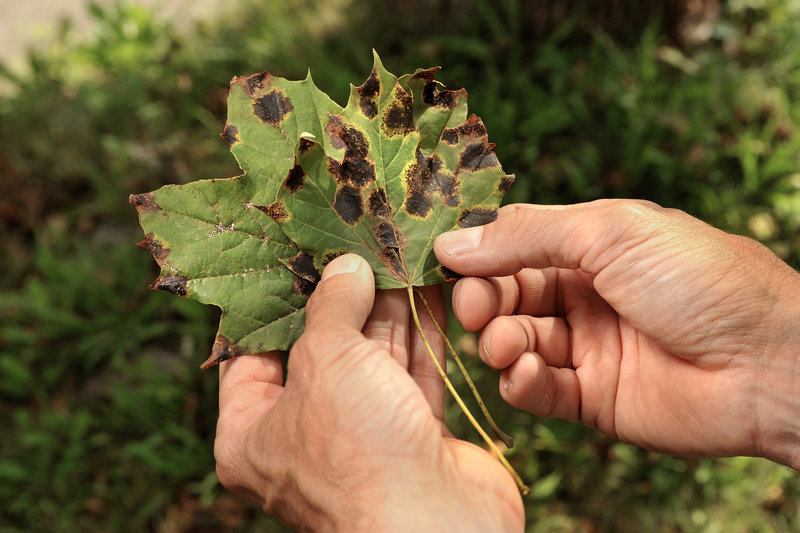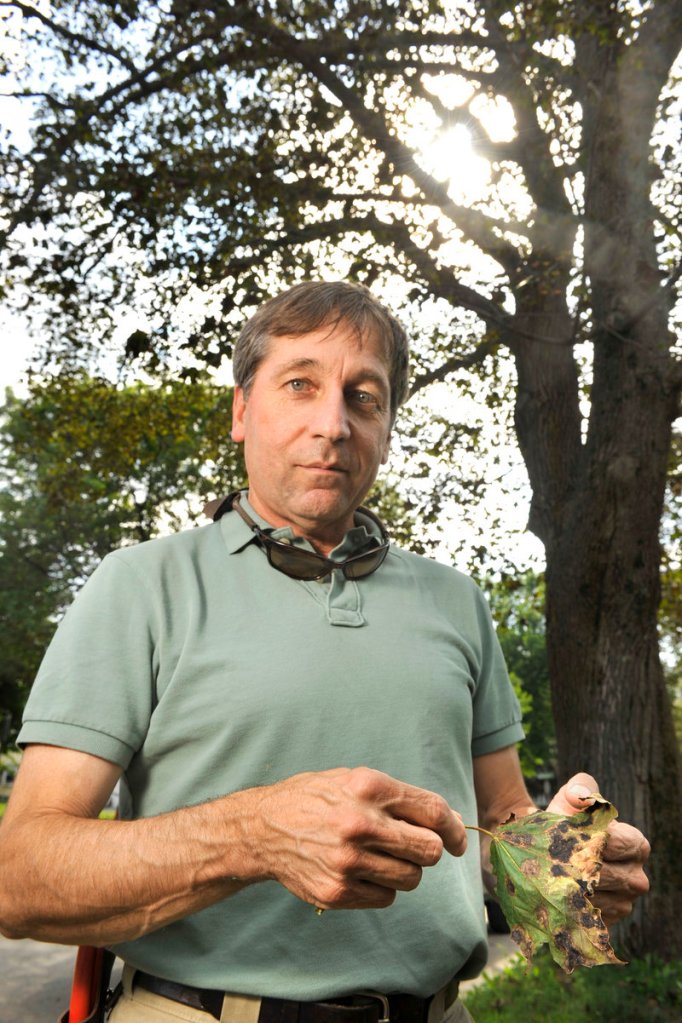Raking leaves is often associated with crisp October mornings, children leaping into piles of red and orange colors, and a mug of hot apple cider.
It’s not often associated with sunscreen, bathing suits and lemonade.
But this year, an earlier-than-usual leaf drop — particularly for the state’s maple trees — has Mainers breaking out the rakes in August. A wet spring is mostly to blame, said Bill Ostrofsky, a pathologist with the Maine Forest Service. Calls from concerned homeowners have been pouring in lately, he said.
The wet weather provided ideal conditions for fungi to flourish in some trees, leading to disease.
“It has been very common throughout the state,” Ostrofsky said.
Fungal infections are behind the two types of diseases — anthracnose and tar leaf spot — that have been plaguing the trees.
Anthracnose diseases affect hardwood trees throughout the eastern United States. They usually causes dead areas or dark spots on the leaves.
All of Maine’s maple trees can be affected by tar leaf spot disease, but it can be most damaging to Norway maples. The infection begins in the spring when the leaves are expanding, and wet conditions help the fungi infect the leaves. Spots on leaves are initially yellow and then turn dark and black.
“These can cause an early defoliation,” Ostrofsky said. Both diseases cause this.
Dave Struble, Maine’s state entomologist and head of the Forest Health and Monitoring Division of Maine Forest Service, said that a year or two of these infections will have little effect on the tree. But several years of infections can weaken a tree.
Ostrofsky agreed that these aesthetic and raking displeasures won’t have a long-term effect on the trees. The trees may not be as visually appealing with the dark and dead spots, but they should not die from these infections.
In addition, Ostrofsky said that because this is mostly a residential and urban issue, the statewide viewing of foliage shouldn’t change.
These infections began back in the spring.
“Wet springs drive the situation,” Struble said.
When the leaves were coming out to bud and expand, the fungus infected the trees, and now, several months later, the results are showing. There are some steps Mainers can take to treat the infections, or prevent their spread.
For infected trees, any affected leaves should be raked up, and then either covered with soil, composted or taken away to a leaf landfill to prevent the spread of the infection.
Fungicides can be used to prevent the infection early in the year, but Ostrofsky said that the cost of them doesn’t make them worth it because the infection shouldn’t hurt the trees in the long run.
“It is difficult to eliminate the disease completely,” Ostrofsky said.
Staff Writer Ellie Cole can be contacted at 791-6359 or at:
ecole@pressherald.com
Send questions/comments to the editors.




Success. Please wait for the page to reload. If the page does not reload within 5 seconds, please refresh the page.
Enter your email and password to access comments.
Hi, to comment on stories you must . This profile is in addition to your subscription and website login.
Already have a commenting profile? .
Invalid username/password.
Please check your email to confirm and complete your registration.
Only subscribers are eligible to post comments. Please subscribe or login first for digital access. Here’s why.
Use the form below to reset your password. When you've submitted your account email, we will send an email with a reset code.